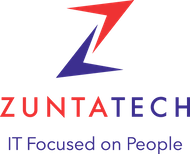Contact
Zunta Technologies LLC
Home Office
565 South Mason Road #367
Katy, TX 77450
Houston | San Antonio | Austin

Copyright Zunta Technologies LLC 2022
Phone: 713-300-1870
Helpdesk@zuntatech.com
Sales@zuntatech.com
In the vast landscape of cyber threats, phishing stands out as a prevalent and deceptive method employed by cybercriminals to gain unauthorized access to sensitive information. In this comprehensive guide, we’ll explore what phishing is, how it works, and most importantly, how to protect yourself from falling victim to these malicious attacks.
In today’s digital age, the lifeblood of any small business is its data. From customer information to financial records, preserving and protecting this valuable asset is non-negotiable. Implementing a robust data backup strategy is not only a best practice but a crucial step toward ensuring the resilience and continuity of your small business. In this guide, we’ll explore the best data backup strategy tailored for small businesses.
The Dark Web, a hidden realm accessible only through specific software, has gained notoriety for its clandestine activities and illicit trade. In this blog post, we’ll explore the dangers associated with the Dark Web, shedding light on the potential threats it poses to individuals and businesses.
In the fast-paced world of Information Technology (IT), where innovation is the driving force, failures can sometimes be inevitable. Understanding and learning from these failures is crucial for the continuous improvement of IT systems. In this blog post, we will delve into some of the most common IT failures that organizations encounter and explore strategies to avoid them.
Weather patterns predicted by the National Oceanic and Atmospheric Administration (NOAA). Forecasts, hurricane predictions loom large, threatening to disrupt operations and plunge businesses into chaos. In this volatile landscape, one crucial aspect demands immediate attention: the imperative of backing up IT infrastructure. As NOAA issues warnings of potential hurricanes, the significance of robust data protection measures cannot be overstated.
In the volatile landscape of modern business, challenges often arise unexpectedly, ranging from economic downturns to natural disasters. As entrepreneurs and business owners navigate through these turbulent times, having the right tools and support becomes paramount. Microsoft Business Premium emerges as a beacon of resilience, offering a comprehensive suite of solutions designed to empower businesses, especially during adverse conditions like bad weather.
In today’s interconnected world, businesses face the challenge of maintaining operational continuity regardless of external disruptions such as inclement weather. Zunta Technologies, a leader in technological solutions, has established itself as a reliable partner in enabling clients to sustain productivity and efficiency even amidst adverse weather conditions impacting their remote workforce.
In an era where cyber threats loom larger than ever, innovative solutions like Blackpoint are emerging as crucial defenses in safeguarding against sophisticated attacks. As digital landscapes evolve, so do the methods employed by cybercriminals, necessitating advanced technologies to stay one step ahead.
In today’s interconnected world, the traditional perimeter-based security model is no longer effective. Cyber threats have become more sophisticated, and the boundary between inside and outside the network has blurred. With remote work and cloud adoption on the rise, ensuring the security of your organization’s data is more challenging than ever.
In today’s fast-paced digital landscape, partnering with a managed IT company has become essential for businesses seeking to streamline operations and enhance productivity. However, not all managed IT service providers are created equal. To ensure you select the right partner, here are the top four essentials you should look for in a managed IT company.
In today’s fast-paced work environment, effective communication and collaboration are essential, especially as the lines between remote and in-office work continue to blur. Microsoft Teams and Outlook have emerged as pivotal tools that facilitate seamless interaction
Zunta Technologies LLC
Home Office
565 South Mason Road #367
Katy, TX 77450

Phone: 713-300-1870
Helpdesk@zuntatech.com
Sales@zuntatech.com
